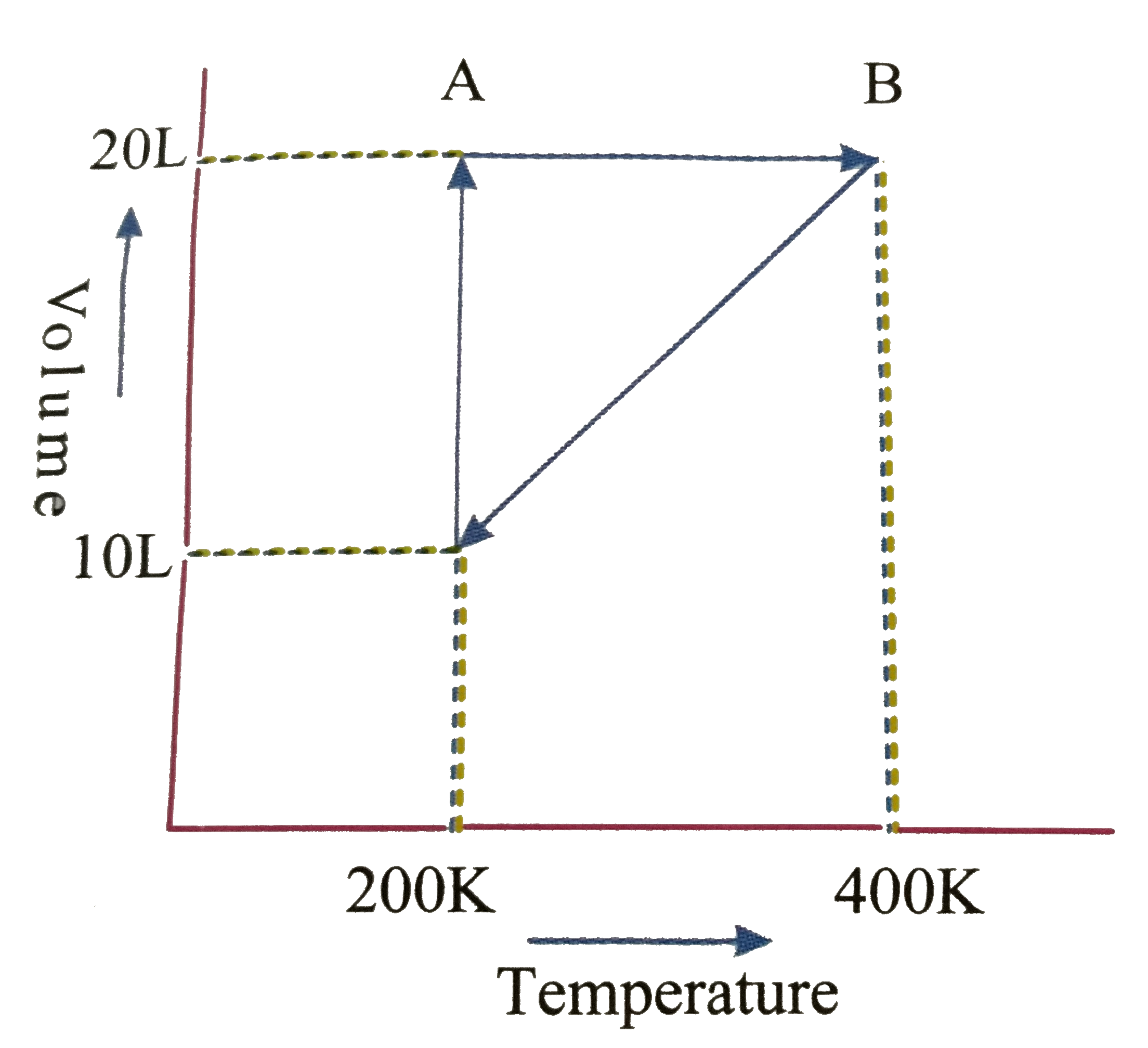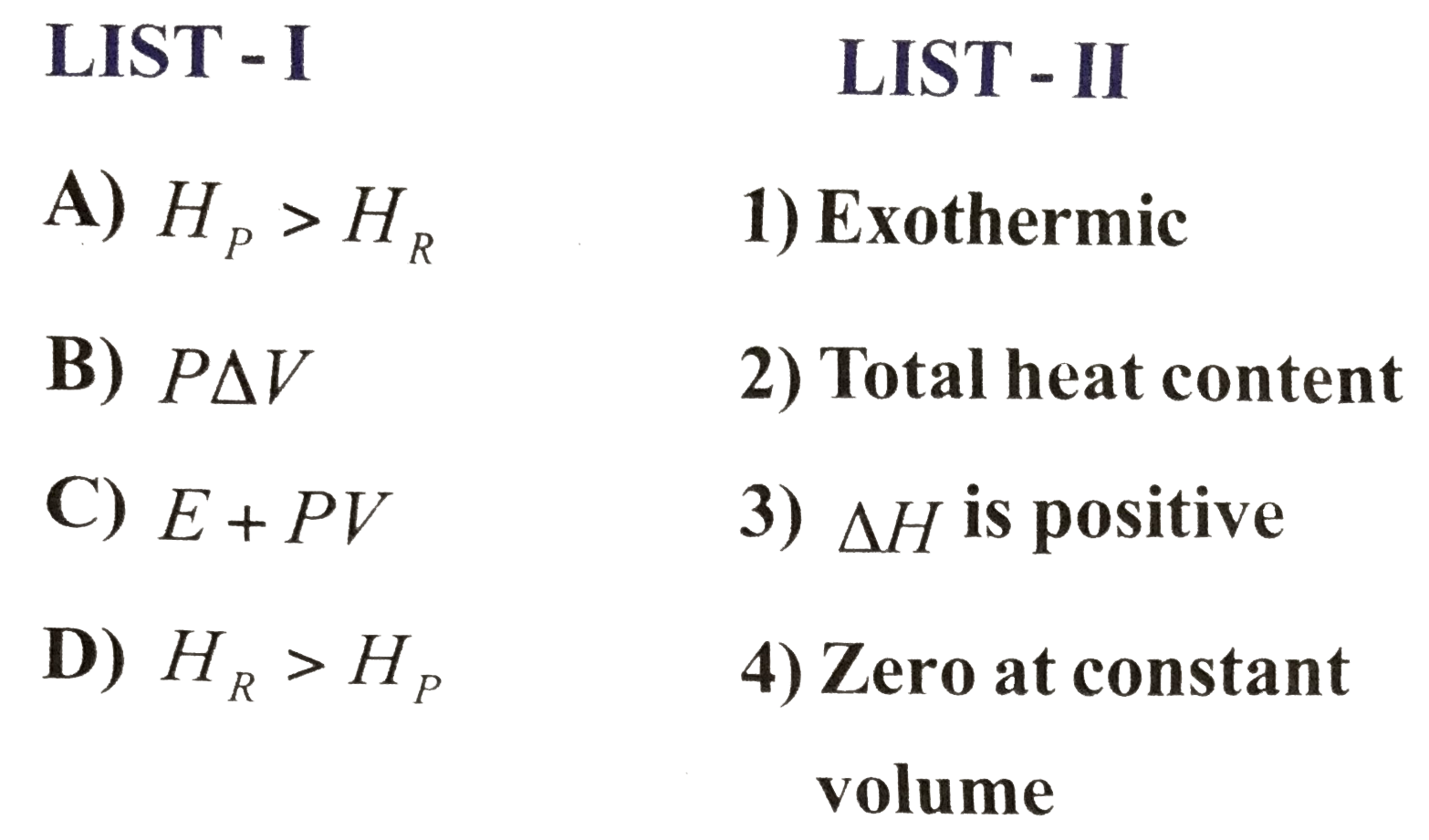The enthalpy change involved in the oxidation of glucose is −2880kJmol−1. Twenty five per cent of this energy is available for muscular work . If 100kJ of muscular work is needed to walk one kilometre, what is the maximum distance that a person will be able to walk after eating 120g of glucose ?
The correct Answer is:4.8 km
Energy available for muscular work by 1 mole of glucose =2880×25100=720kJ
Thus, 180 g (1 mole) of glucose(C6H12O6) supplies energy = 720 kJ will supply 120 g glucose =720180×120=480kJ. Distance covered by 100 kJ energy = 1 km or 100 kJ is need to walk 1 km
∴ Distance covered 480 kJ energy =1100480=4.8km
Topper's Solved these Questions
- BOOK - NARAYNACHAPTER - THERMODYNAMICSEXERCISE - Passages13videos
THERMODYNAMICS
- BOOK - NARAYNACHAPTER - THERMODYNAMICSEXERCISE - Matching type6videos
THERMODYNAMICS
- BOOK - NARAYNACHAPTER - THERMODYNAMICSEXERCISE - Level -V106videos
THERMODYNAMICS
- BOOK - NARAYNACHAPTER - STRUCTURE OF ATOMEXERCISE - EXERCISE - IV EXEMPLAR PROBLEMS24videos
STRUCTURE OF ATOM
Similar Questions
Graph for one mole gas is given below

Process, A→B represents03:11View Solution
The correct match is03:07View SolutionIdentify the correct statement for change of Gibb's energy for a system (ΔGsystem) at constant temeprature and pressure:
View SolutionWhich of the following conclusions couldnot be derived from Rutehrford's α-particle scattering experiment?
02:53View SolutionThe enthalpy change involved in the oxidation of glucose is -2880kJ mol^(-1) . Twenty five per cent of this energy is available for muscular work . If 100kJ of muscular work is needed to walk one kilometre, what is the maximum distance that a person will be able to walk after eating 120g of glucose ?
02:11View SolutionThe enthalpy change involved in the oxidation of glucose is -3000kJ mol^(-1) . 25% of this energy is available for muscular work. If 100kJ of muscular work is needed to walk 1 kilometer, what is the maximum distance that a person will be able to walk after eating 144g flucose ?
03:23View SolutionThe enthalpy change involved in oxidation of glucose is −2880kJmol−1,25% of this energy is available for muscular work. If 100kJ of muscular work is needed to walk one km, the maximum distance (km) that a person will be able to walk after taking 150g to glucose is.........
03:19View SolutionThe enthalpy change involved in the oxidation of glucose is -2880 kJ mol^(-1) 25% of this energy is available for muscular work. If 100 kJ of muscular work is neededto walk one kilometer, what is the maximum distance that a person will be able to walk after consuming 120 gm of glucose?
03:23View SolutionThe enthalpy change involved in the oxidation of glucose is -2880 kJ mol^(-1) . Twently five percent of this energy is available for muscular work. If 100 kJ of muscular work is needed to walk one kilometer, what is the maximum distance that a person will be able to walk agter eating 125 g of glucose ?
08:26View SolutionIf 150 kJ of energy is needed for muscular work to walk a distance of one km, than how much of gulcose one has to consume to walk a distance of five km, provided only 30% energy is available for muscular work.The enthalpy of combustion of glucose is 3000 kJ mol^(-1)
05:36View SolutionThe enthalpy change involved in the oxidation of glucoseis - 2880 kJ mol^(-1) . Twenty five per cent of this energy is available for muscular work. If 100 kJ of muscular work is needed to walk one kilometer, what is the maximum distance that aperson will beableto work after eating 120 g of glucose ?
03:19View SolutionIf 150kJ of energy is needed for muscular work to walk a distance of one km, than how much of gulcose one has to consume to walk a distance of five km, provided only 30% energy is available for muscular work.The enthalpy of combustion of glucose is 3000kJmol−1
View Solutionग्लूकोज की दहन उष्मा -2880 किलो-जूल/मोल है । इस ऊर्जा की 25% ऊर्जा पेशीय कार्य ( muscular work ) के लिए उपलब्ध है तथा 1 किलोमीटर चलने में 100 किलो-जूल पेशीय कार्य की आवशयकता पड़ती हो तो बाह अधिकतम दुरी क्या है जो एक व्यक्ति 120 ग्राम ग्लूकोज खाने के बाद चल सकेगा ।
04:33View Solutionग्लूकोज के ऑक्सीकरण में निहित एन्थैल्पी परिवर्तन −2880mol−1 है । इस ऊर्जा का 25 प्रतिशत मांसपेशीय कार्य के लिए उपलब्ध होता है । यदि 1 किलोमीटर चलने के लिए आवश्यक मांसपेशीय कार्य 100 kJ हो तो 120 g ग्लूकोज लेने वाला व्यक्ति अधिकतम कितनी दूरी चलने में सक्षम होगा ?
03:45View SolutionThe enthalpy change involved in the oxidation of glucose is -2880 kJ"mol"^(-1) . Twenty five per cent of this energy is available for muscular work. If 100 kJ of muscular work is needed to walk one kilometer, what is the maximum distance that a person will be able to walk after eating 120 g of glucose?
03:14View SolutionIf 50 kJ of energy is needed for muscular work to walk a distance of 1 km, then how much glucose one has to consume to walk a distance of 5km provided only 30% energy is available for muscular work. The enthalpy of combustion of glucose in 3000 kJ mol−1.
03:52View Solution

